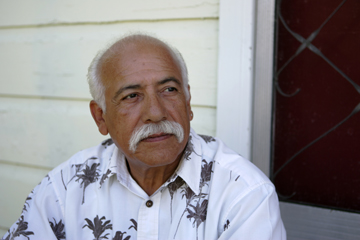Meetings begin public input process for new park plan
The staff at Pinnacles National Monument recently completed four
public gatherings to take comments for the park’s new general
management plan.
Meetings begin public input process for new park plan
The staff at Pinnacles National Monument recently completed four public gatherings to take comments for the park’s new general management plan.
At the end, there were no wild suggestions for the likes of escalators along the steeper portions of the High Peaks Trail.
“None of the ideas were along the lines of ‘let’s have rollercoasters and water slides,'” said Carl Brenner, supervisor for interpretation and education at the park. “Comments were definitely in line with the vision of the park service.”
Even so, conforming with the park service is hardly required.
“If we don’t know what people truly want, then we can’t move in directions that people want us to,” Brenner said. “There are no bad suggestions. Everything gets put on the board.”
The meetings took place through March, beginning in Soledad and ending at Santa Clara University. Other sites were Hollister and Jefferson School, near the east entrance to the 26,000-plus acre park.
The general management plan guides the direction of the park for many years. The last plan for Pinnacles was completed in 1976. While plans are often updated more frequently, the 1976 plan worked at Pinnacles because the park was not expanding, and unanticipated issues did not come up.
Things began to change with the acquisition of a parcel known as the Pinnacles Ranch and the campground that it contained at the east entrance of the park. Coupled with a high-profile recovery effort for the California condor, Pinnacles is evolving dramatically as it approaches its 100th birthday next year.
While the public information-gathering sessions are over, people still have the chance to comment, either through the Internet at www.nps.gov/pinn, or by sending comments to General Management Plan Team, Pinnacles National Monument, 5000 Hwy. 146, Paicines, CA 95043.
The plan that’s now taking shape was first launched in 1998, and comments from the public meetings held then are on the park Web site. But the undertaking was shelved until acquisition of the Pinnacles Ranch was completed. That deal was inked in March 2006.
The meetings, most of them lightly attended, were strategically located to capture different communities of interest.
In Soledad, the focus was on the park’s less visited west side.
For the last decade or more, the park staff has been working as funds permit to move facilities on the west side of the park.
“The whole [existing] area is in a riparian floodplain” Brenner said. “In 1998 the whole area was flooded. We had received funding to move facilities to higher ground, and work was supposed to begin in April of last year. But funding was pulled. [Hurricane] Katrina and other factors created greater needs and the service had to redirect funds. We’re back on track and supposed to begin in 2008.”
Some users would like to see camping areas re-established on the side of the park closest to Soledad.
“Hollister was mostly focused on the east side of the park and what we could do with the ranchlands there,” Brenner said.
Suggestions ran the gamut, from creation of new trails to opportunities for bicyclists.
One of the most intriguing ideas may have come at the Santa Clara session, where an environmental law student suggested that the east side camping area be reconfigured into a network of small clusters of sites, insulated from one another by habitat and open space.
Like all other suggestions, the idea is getting consideration.
“It takes up a larger area,” Brenner explained. He also noted that the existing layout of the campground is familiar.
“[Former owner] Stu Kingman mimicked it after national park campgrounds,” he said.
The buildings and facilities borrow cues from parks across the West.
While park staff anticipated some apprehension on the part of the public, the meetings brought out mostly stakeholders who know and love the park’s remote crags and steep canyons.
The monument was established in 1908 because of several unique features. It contains the remant of an ancient volcano that was split between the Pacific and North American tectonic plates. The other half of the formation is in the Tehachapi Mountains, according to park interpreters.
The cave complex is the largest assemblage of talus caverns – caves formed by jumbles of fallen rock – in the national park system. The remoteness of the place offers haven to a host of wildlife. For example, the greatest documented diversity of bee species in the world is found at Pinnacles.
When the public comment period closes at the end of May, park service staff will begin an intensive data analysis and survey the park’s resources as they exist today. By the end of the year, the staff expects to have a list of alternative approaches out to the public, leading to a draft general management plan back to the public for review in 2009, when a blueprint for the park’s evolution should be in place.










